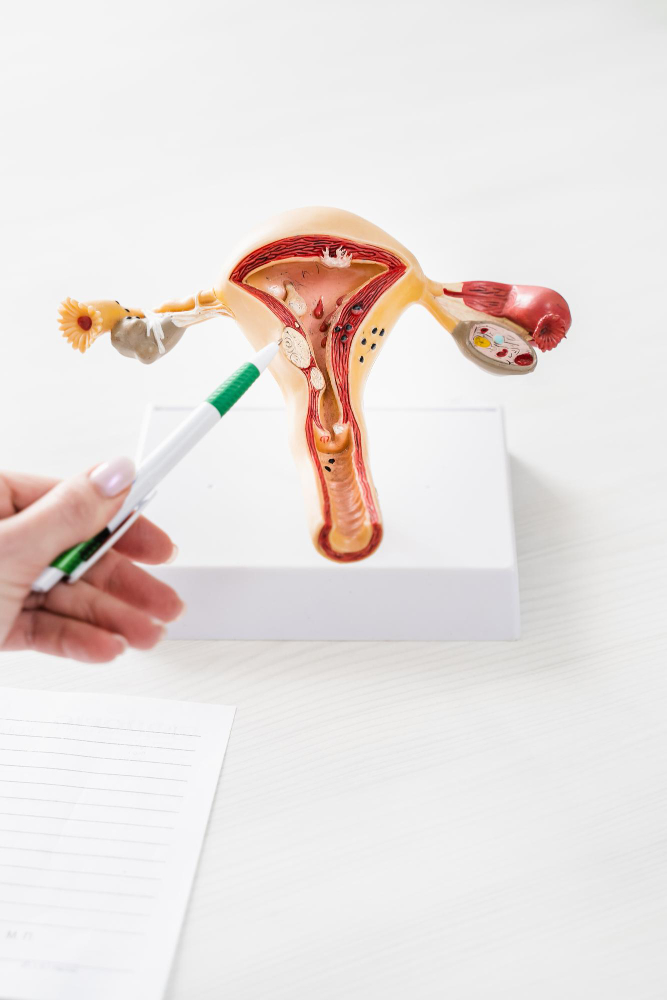
Laparoscopic myomectomy is a surgical procedure performed to remove uterine fibroids (also known as leiomyomas) while preserving the uterus. Here’s an overview of the procedure:
Preparation: Before the procedure, you will undergo a thorough evaluation, including a medical history review, physical examination, and possibly some pre-operative tests such as imaging studies (e.g., ultrasound, MRI). Your healthcare provider will discuss the procedure with you, explain the risks and benefits, and answer any questions you may have.
Anesthesia: Laparoscopic myomectomy is typically performed under general anesthesia, which means you will be asleep and pain-free during the procedure. In some cases, regional anesthesia or spinal anesthesia may be used instead.
Surgical Technique: During the procedure, several small incisions (usually 0.5 to 1 centimeter in length) are made in the abdomen. A laparoscope, a thin tube with a camera and light attached to it, is inserted through one of the incisions to provide a view of the pelvic organs on a monitor. Surgical instruments are inserted through the other incisions to perform the procedure.
Fibroid Removal: The surgeon carefully identifies and removes the uterine fibroids using specialized instruments. Depending on the size, number, and location of the fibroids, different techniques may be used, including cutting, shaving, or dissecting the fibroids away from the surrounding uterine tissue. In some cases, the fibroids may be morcellated (cut into smaller pieces) to facilitate removal through the small incisions.
Closure and Recovery: Once the fibroids have been removed, the surgeon closes any incisions with sutures or surgical glue, and dressings may be applied. You will be taken to a recovery area where you will be monitored as you wake up from anesthesia. Most patients can go home the same day as the procedure, although some may require an overnight stay in the hospital.
Recovery and Follow-up: Recovery from laparoscopic myomectomy is typically quicker and less painful compared to traditional open surgery (abdominal myomectomy). Most patients can return to normal activities within a few weeks, although strenuous activities and heavy lifting should be avoided during the initial recovery period. Your healthcare provider will provide instructions for post-operative care and schedule a follow-up appointment to monitor your recovery and evaluate the outcome of the procedure.
Laparoscopic myomectomy is a safe and effective treatment option for women who wish to preserve their fertility or avoid a hysterectomy (surgical removal of the uterus) while addressing symptomatic uterine fibroids. It offers the advantages of shorter hospital stays, faster recovery times, and less scarring compared to traditional open surgery. However, it may not be suitable for all patients, and the decision to undergo laparoscopic myomectomy should be made in consultation with a qualified gynecologist or gynecologic surgeon based on individual circumstances and treatment goals.

